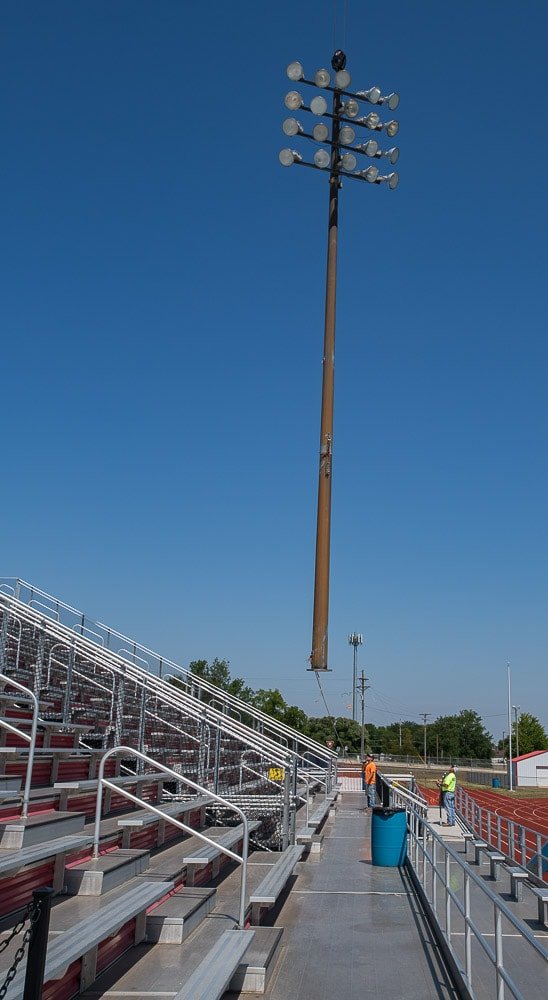

New LEDs on new poles – behind the seats – installed

The south-end lights are in the foreground as the north-end pole is raised.
You might need to leave your sunglasses on after the sun goes down at Cardinal Stadium because of the new lights that were put in place this week.
Actually, the new LED system is designed to direct the bright light down onto the field instead of glare in your eyes.
A Bill’s Electric crew has been busy on site assembling the three-section poles and mounting the lights onto the bars atop the poles.
The lights are aimed at the factory and then placed on the pole according to a diagram.
As the pole is lowered onto its base, a laser below the bottom tier of lights sends a beam to a target in the middle of the field.
So then there should be even lighting across the field.
You might notice a couple of lights lower down on the pole that are pointing to the sky instead of the field. Their purpose is to illuminate the ball when it travels above the angle of light hitting the field.
The School Board voted in May to replace the lights, mainly because the bulbs for the old system are discontinued.
Kevin Cooper, assistant superintendent of business operations, told the board he had asked two firms for bids, and only Bill’s Electric responded. The bid to install new light fixtures on the existing poles was $294,000.
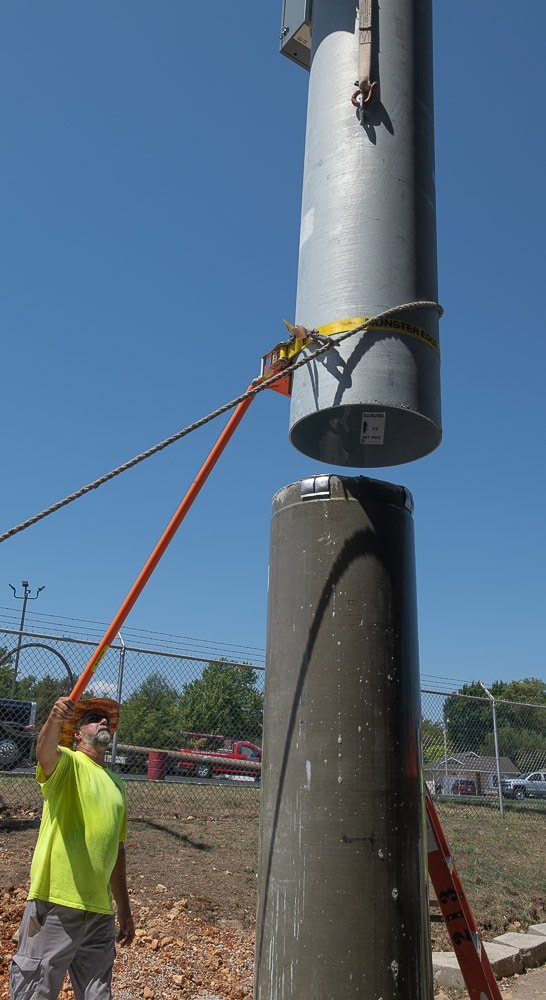
The 90-foot pole is guided onto its precast concrete base, which is anchored in 18 feet of concrete.

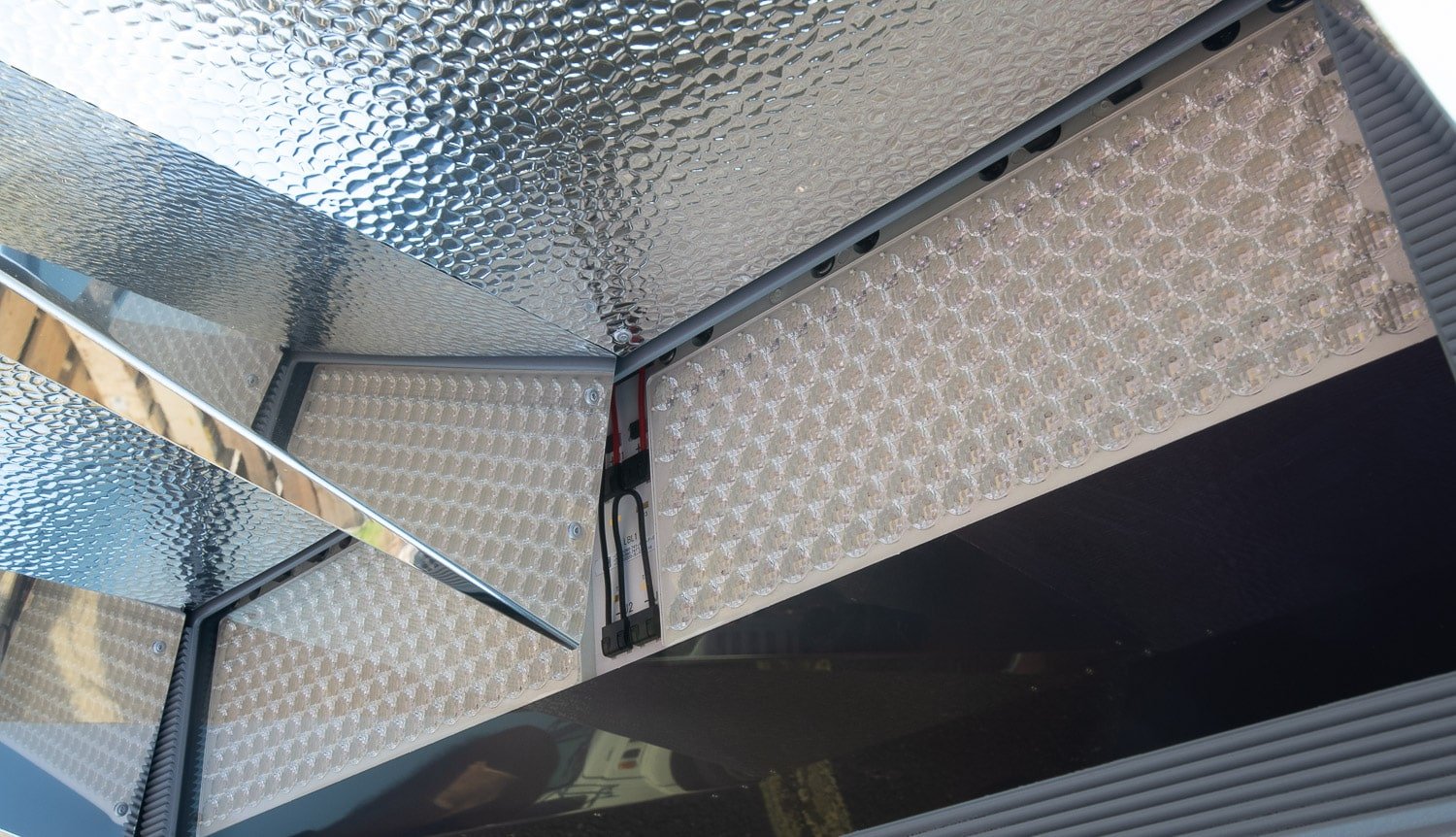

A battery-operated laser (at left below the bottom row of lights) shoots a red beam toward a target placed in the middle of the field. The laser indicates when the pole is turned at the precise angle to provide the best light coverage .
There are 360 diodes on each light head.
However, the board decided to go ahead and replace the poles, too, at the bid price of $485,000. The poles are now placed behind the stands on the home and visitors side. There have been complaints about the poles partially obscuring the view of the field.
Board member Lisa Robinson pointed out that the stadium is used for many more purposes besides football.
The old lights have been in place since 1996 or 1997 says former Superintendent Ron Lankford.
Back then, the old concrete-block grandstand was narrow enough to set between the poles so it wasn’t as much of a problem to look around them.
The new grandstand, running the length of the field, was built around the light poles. Lankford said the $300,000 cost to put the lights behind the stadium at that time was beyond the budget for improvement.
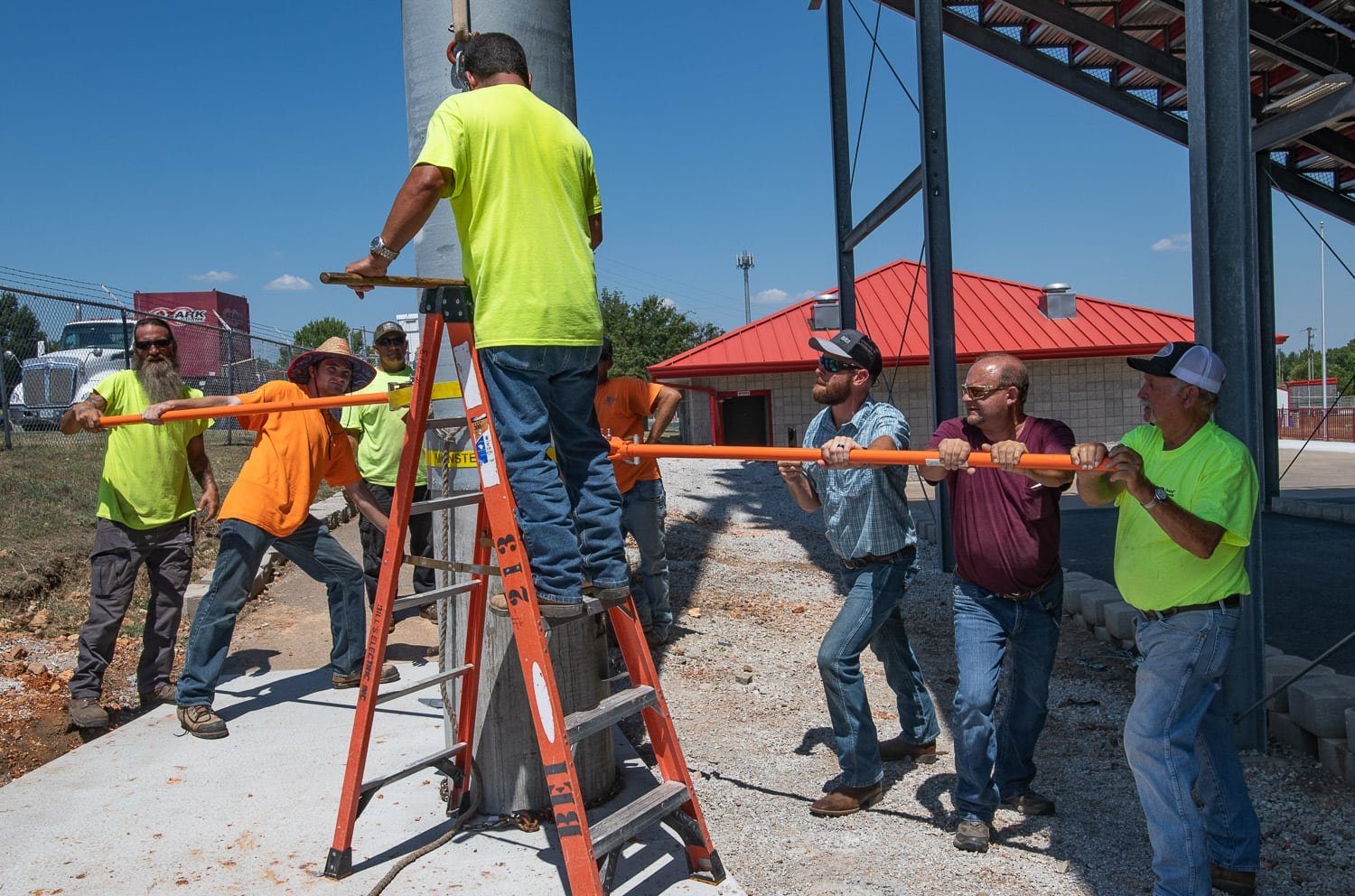
Workers push and pull to turn the pole so the lights are aligned with the field.
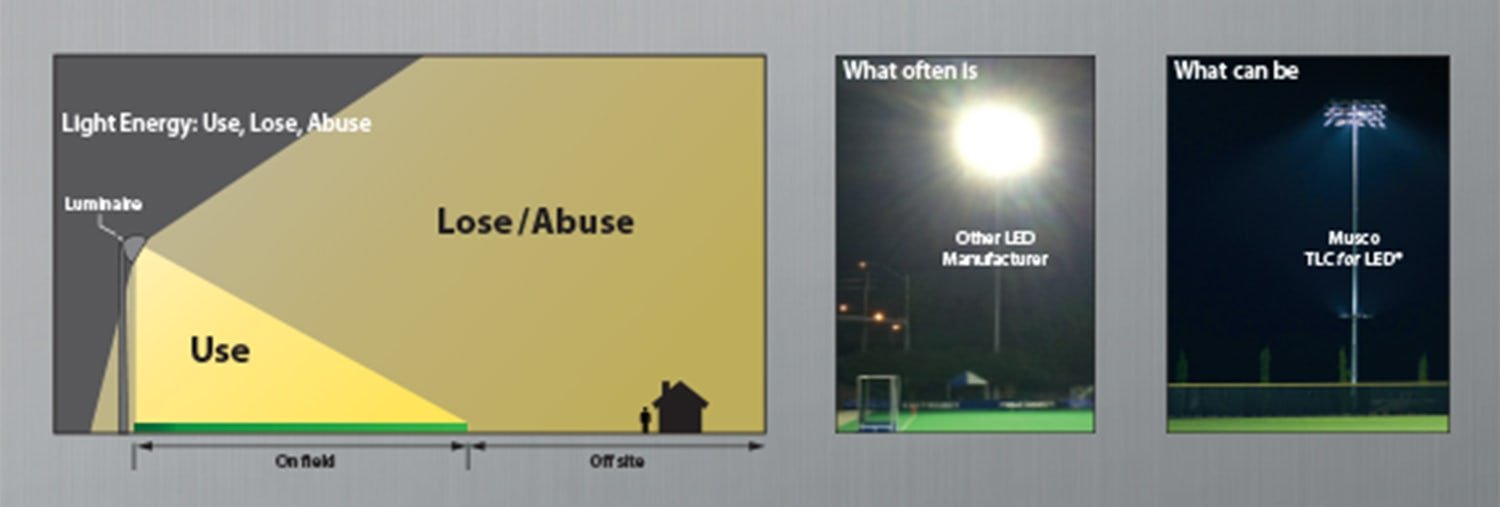
Musco Lighting illustrates how their lights are directed at the field, whereas old systems light the whole neighborhood.
Besides that, it was thought that leaving the lights in back of the grandstand would dim their effectiveness on the field.
That shouldn’t be a problem with the new lights. Each of the 26 light heads (13 on each pole) on the home side has close to 360 LED diodes.
The galvanized steel poles are 90 feet long and 4 feet off the ground as they sit on a concrete column. The column is anchored to a concrete foundation that goes 18 feet in the ground. Whereas the old poles had a base that was bolted to a concrete foundation. (The old foundations aren’t being removed. You should still be able to look down and see the bolts coming out of the concrete, unless they’re sawed off.)
Bill’s Electric’s Johnny Reavis has been with the company for 38 years and remembers helping to install the old lights.
There was no laser to aim the lights back then. He said they positioned people at various places on the field while somebody in a lift manually aimed each light. “I’m kind of glad those lights are a thing of the past,” he said.
Todd Stych, Musco Lighting’s sales representative for Missouri, says the new lights will use 1/3 less energy than the ones they’re replacing. They also produce less heat than a metal halide fixture so they last longer. Musco provides a 25-year warranty.
He points out that the new system includes the company’s Show-Light entertainment package. Click here to see a video of how that works.
The Webb City Sentinel isn’t a newspaper – but it used to be, serving Webb City, Missouri, in print from 1879-2020. This “newspaper” seeks to carry on that tradition as a nonprofit corporation.
© All Rights Reserved 2024
DIY website design by Bob Foos